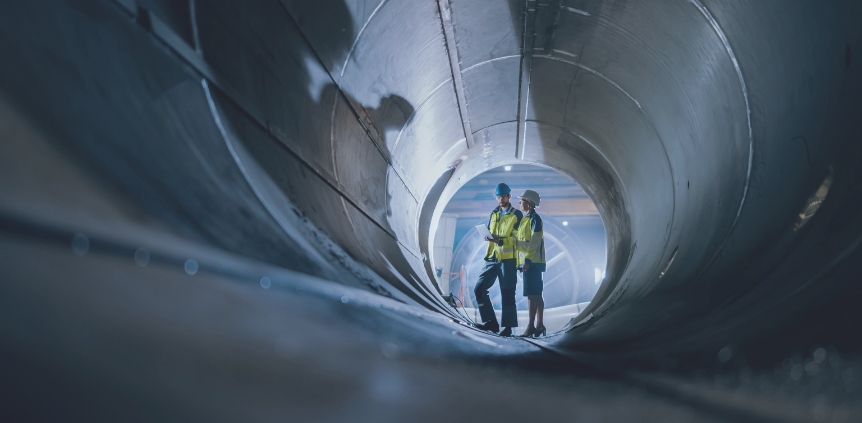For those familiar with pipeline hydraulics, this newsletter offers an intriguing read. If you’re not, read on to discover how control room operators manipulate set points to achieve what we call a “lean profile” in the control room. This profile minimizes GHG emissions for current operating pipeline assets.
A lean hydraulic profile on a pipeline refers to the actions that control room operators execute on the SCADA system to manipulate the pressure set points at each pump station in the field to ensure minimum energy usage to achieve the schedule or maximum flow rate.
In real-time and consistently over time – or regularly in time series – a control room operator adjusts the pressure set points at various locations along the pipeline. These adjustments are in an effort to reduce the pressure drop between the pump stations to the minimal possible pressure differential – or the smallest push needed to move the product. The product is “pushed” by the pumps. In liquid pipelines, there may be many products lined up in “batches”, all of which have differeing density and viscosity, adding another non-linear layer that control room operators are trying to compute in their heads and execute the setpoints required to maintain an optimal lean hydraulic profile in real-time. The “push” that the product batches get from the pumps is generated either by a co-located natural gas power generator or a direct connection to the electrical grid. Either way, energy is being consumed so maintaining a lean hydraulic profile will both reduce emissions associated with operation, and it will reduce power costs.
Currently, a control room operator works to achieve a lean hydraulic profile at all times during their shift by constantly being vigilant and executing set points via their mental models, training, and experience. They are also guided by the hydraulics engineering team, which will advise on the minimal possible pressure drops between pump stations for given product batches. As you can probably tell where I’m going given what we do here at CruxOCM, this is a lot of work for a control room operator. Inevitably, there are variation between people and as people, sometimes we make mistakes.
When paired with pipeBOT™, our leanOPT™ system autonomously executes set points for all product batches in real time to maintain a lean profile. This ensures a consistent reduction in emissions and power costs compared to manual pipeline control room operations. Think of it as adaptive cruise control for your pipeline, determining when and how much to push based on batch details and the operator’s flow rate targets.
I truly believe this is one of the quickest and simplest methods to achieve measurable emissions reduction results for our existing liquid pipeline operations through software implementation. It’s efficient and effective.
If any control room operators and hydraulics engineers out there maintain a lean profile differently, please let us know, as we would love to learn more about the excellent things folks are already doing in control rooms to lower emissions and operate efficiently.







